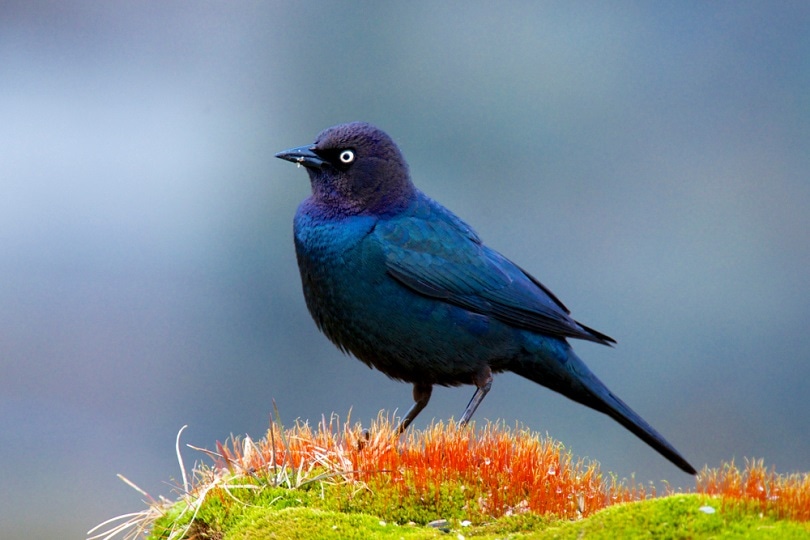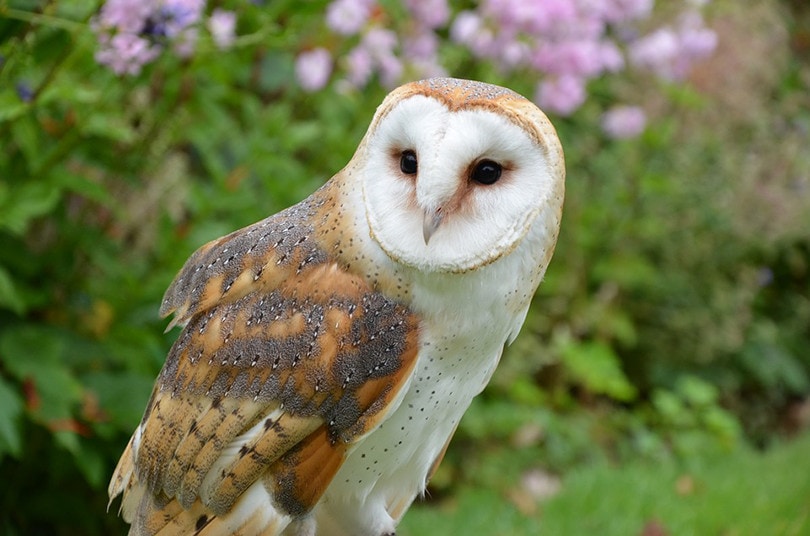Do Birds Have Ears? How Do They Hear?
Last Updated on

Birds certainly can hear! After all, they are famous for the sounds and songs that they create, so they must be able to hear these songs themselves. But do birds have ears?
Yes, birds have ears. They are essentially ear holes covered by special feathers, though, so we just can’t see them.
We look at all there is to know about birds’ ears — how they look, how they work, and what they are typically used for (besides hearing)?

About Birds’ Ears
Birds’ ears are holes in the sides of a bird’s head. They are located behind and a little below the bird’s eyes and are funnel-shaped. This means they start wide on the outside and narrow down into a tube-like structure inside the head.
The ears are covered with specialized feathers that are known as auriculars, which also means cheek feathers or ear coverts. These soft feathers extend from behind the eyes and cover the ears to protect them. They help cut down on air turbulence and can keep out water and dust.
The lack of barbs on the auricular feathers also helps to not interfere with the sounds entering the bird’s ears, and they also aid in conducting these sounds into the ears.
The feathers toward the back of the ears tend to be sturdy, short, and solidly colored, whereas the auriculars are unpatterned, lighter, and lacy.
These auriculars are what give owls such a distinctive facial disk. These feathers help owls hear the almost inaudible sounds of their prey. Think of an owl’s facial disk as a kind of satellite dish that enables them to easily pick up and decipher sounds.
So, birds do have ears, just without any of the usual external ear structures typically seen in humans and many mammals.

How Do Birds Hear?
This 2014 study researched how ducks, crows, and chickens hear. They found that a sound coming from a specific direction would resonate differently in the eardrum closest to the sound as compared to the eardrum farthest away.
The sound is louder and at a different frequency in the ear closest to the sound, enabling the bird to figure out where the sound is coming from even when it hits the ears simultaneously.
Birds also use sight in conjunction with the sounds that they hear. Since their eyes are on the sides of their heads, they have an almost 360-degree vision range. When they hear a sound, birds will do that familiar head tilt in the direction that they heard the sound (which is also helped by their specialized eardrums). Then their eyes will be able to pinpoint the source.
In addition to this, the shape of the bird’s head helps direct sound into their ears, just like how our external ears do for us. There are concaves in a bird’s head, and when sound hits these contours, sound waves will pass through to the closest ear, which is then registered by the other ear. The head is essentially able to deflect, refract, or absorb the sounds.
This all tells us that birds have unique methods to decipher sounds due to their specialized eardrums and the shape of their heads.

How Does This Help Birds?
A study from 2017 discusses how differently birds hear things compared to humans. A bird’s hearing is its second most important sense after sight.
Birds use hearing for communication with each other — they can identify their parents or their young, and they use it for communicating with their flock or in courtship. Even more importantly, they use it as a means of survival, through identifying prey and avoiding predators.
Penguins can identify their mates and members of their families among the hundreds of other penguins in their colonies. The same goes for colonies of flamingoes and gannets, where there can be thousands of birds making a ton of noise. Mates can find each other with just a brief call amidst the raucous and crowded colony.
Birds can use their hearing to identify and predict storms and other natural disasters, such as earthquakes and volcanoes through infrasound. This sound is audible to birds but at too low of a frequency for humans to hear. Being able to hear something akin to a natural disaster can enable the bird to fly to safety in advance of the danger.
Then There Are Owls
Owls have more sensitive hearing than most other bird species. Birds’ ears are behind and below their eyes, so those tufts that you see on certain owl species, like Great Horned and Long-Eared Owls, are partially decorative but are primarily used for camouflage. They are also thought to be helpful in identifying each other.
Many different owl species have asymmetrical ears, with one ear slightly lower than the other. This enables sounds to hit the ears at different times, making it much easier for the owl to identify the source of the sound with precision. Barn owls can hear and catch tiny prey in absolute darkness.
The shape of the owl’s head and face disk are big factors in how well they hear.

While in the Egg
Certain species of birds can hear and communicate while they are still being incubated in an egg.
Yellow-legged gull chicks communicate with each other by vibrating within their eggs and can hear the warning cries of adult birds.
Quail chicks communicate with each other before hatching through clicking sounds, so their hatching will occur at around the same time. An experiment was conducted in which the quail eggs were separated from each other, and the eggs hatched independently, even days apart.
American white pelican embryos are known to make a distress call if the eggs are too hot or too cold. Many species also listen to their parents during brooding so they’ll recognize them once they’ve hatched.
In Conclusion
So, birds do have ears. They might not be noticeable, but they are there, nonetheless. They are sensitive and can help a bird survive against danger and assist in catching dinner.
Robins spend a great deal of time standing and listening with their heads cocked toward the ground. They then swiftly dart in and pull an earthworm from the ground. These birds can literally hear the crawling of a worm beneath the earth!
Birds are beautiful and fascinating little creatures that we share our world with, and we hope that you’ve learned new and interesting tidbits about them!
Featured Image Credit: Agami Photo Agency, Shutterstock
About the Author Kathryn Copeland
Kathryn was a librarian in a previous lifetime and is currently a writer about all things birds. When she was a child, thanks to her love of animals she hoped to work in zoos or with wildlife in some way. She's not strong in the sciences, unfortunately, so she uses her time to research and write about all kinds of birds and animals, and hopes to bring that detailed knowledge to OpticsMag.
Related Articles:
How to Clean a Refractor Telescope: Step-by-Step Guide
How to Clean a Telescope Eyepiece: Step-by-Step Guide
How to Clean a Rifle Scope: 8 Expert Tips
Monocular vs Telescope: Differences Explained (With Pictures)
What Is a Monocular Used For? 8 Common Functions
How to Clean a Telescope Mirror: 8 Expert Tips
Brightfield vs Phase Contrast Microscopy: The Differences Explained
SkyCamHD Drone Review: Pros, Cons, FAQ, & Verdict
